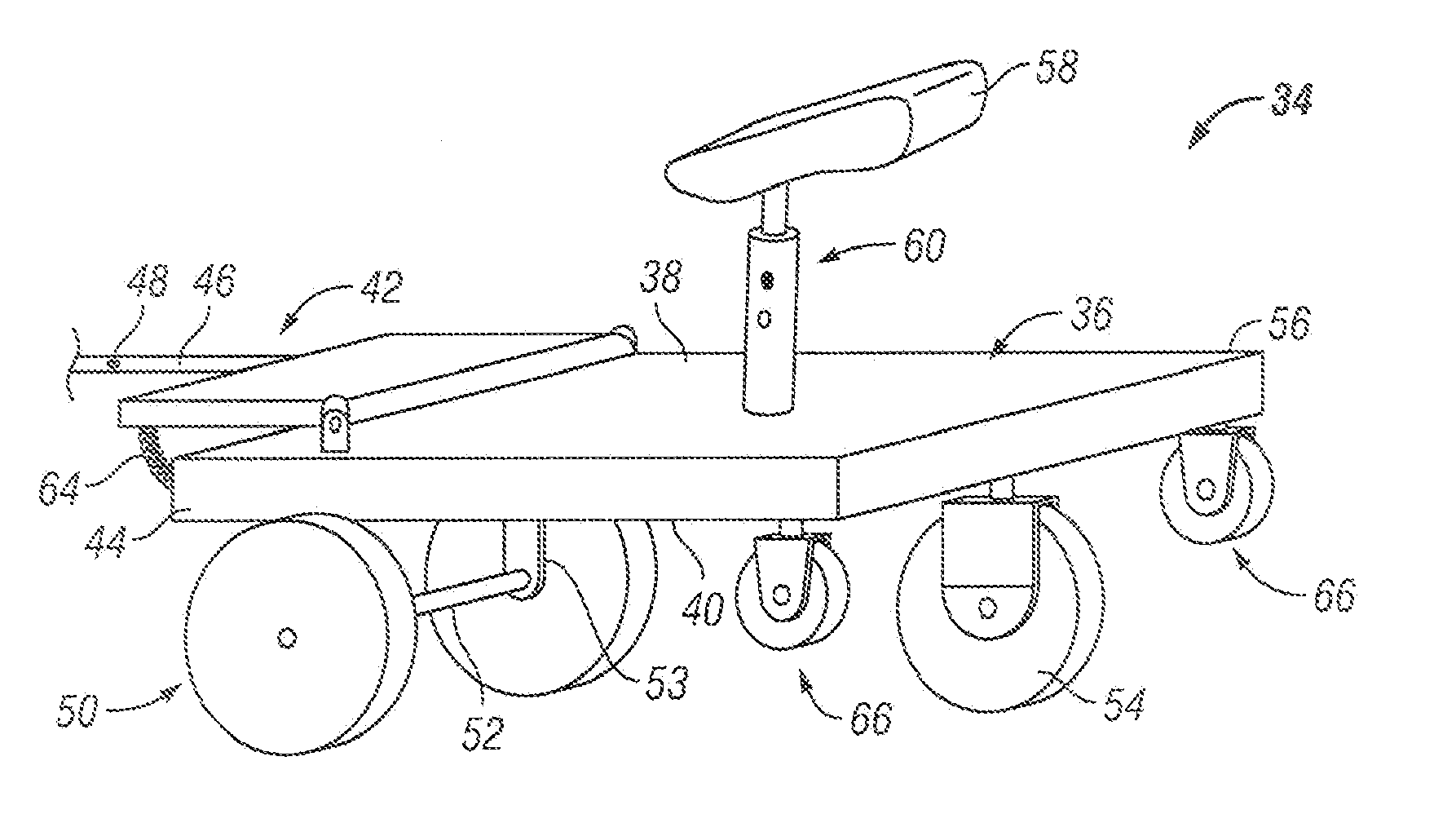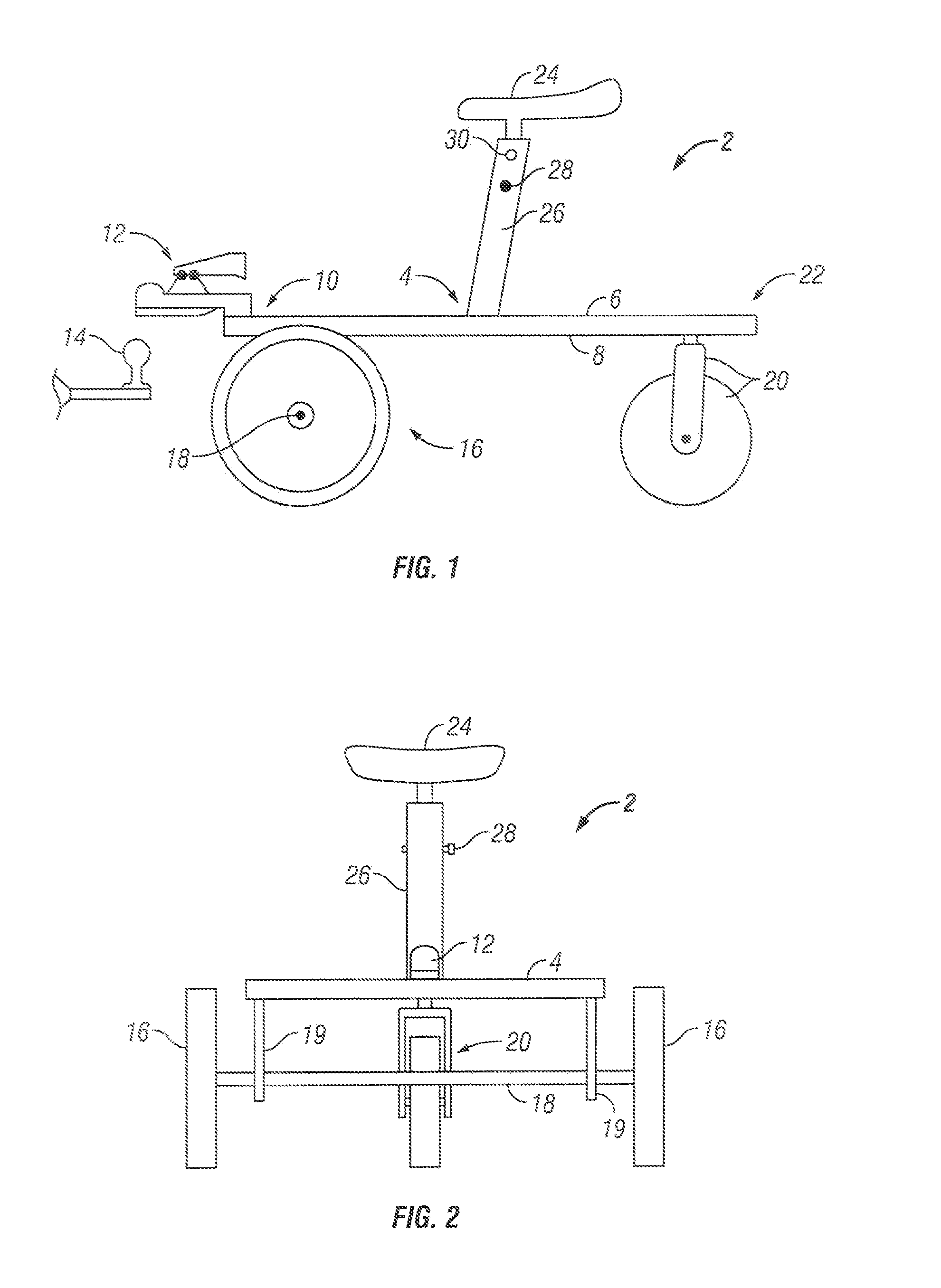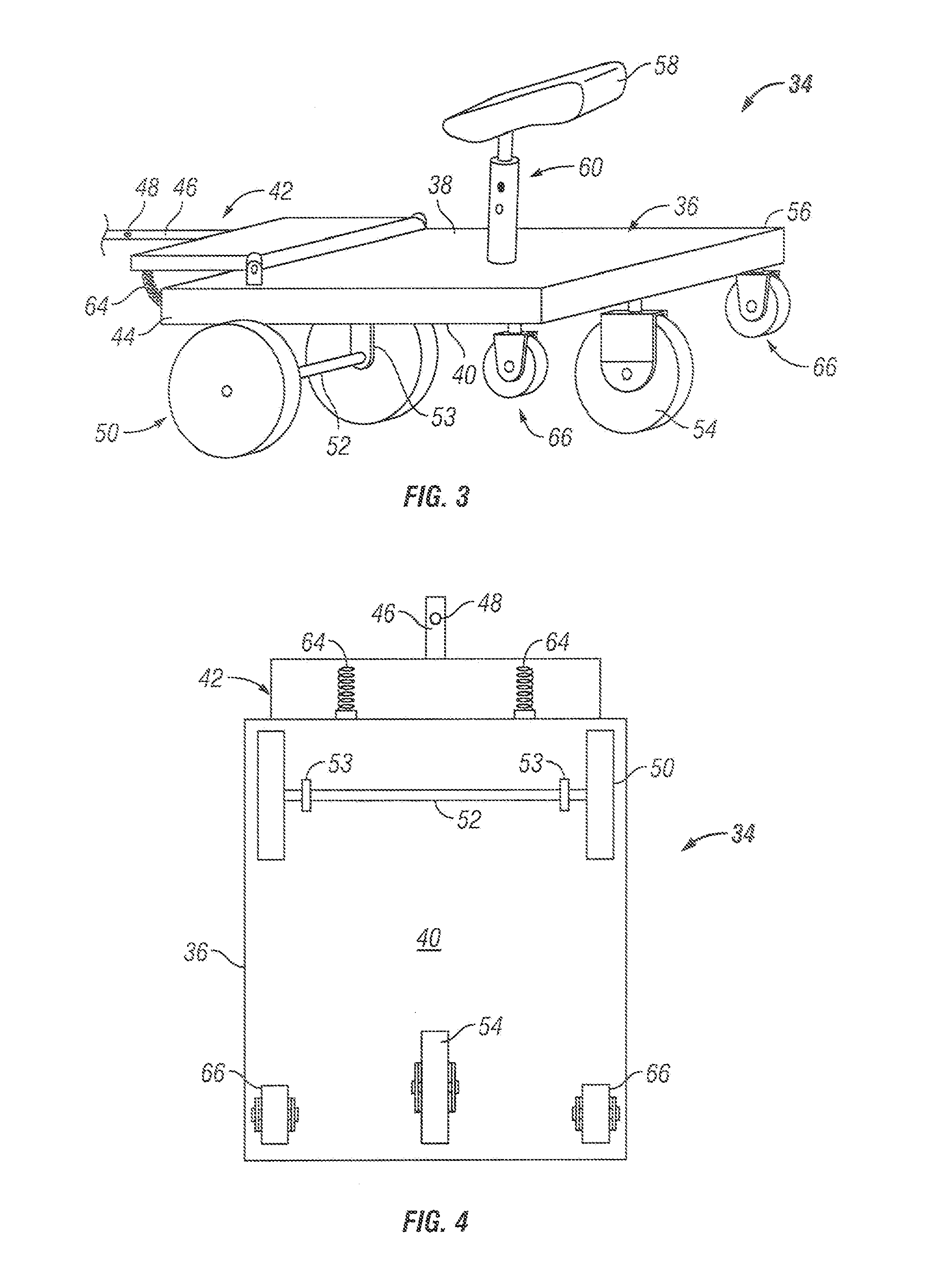Sulky for self-propelled machines
a self-propelled machine and sulky technology, which is applied in the direction of trailer steering, transportation and packaging, tractors, etc., can solve the problems of rider likely to topple as the sulky suddenly pitches toward the ground, dislodgment of the operator or overturning the entire sulky, and achieve the effect of stabilizing the sulky
- Summary
- Abstract
- Description
- Claims
- Application Information
AI Technical Summary
Benefits of technology
Problems solved by technology
Method used
Image
Examples
first embodiment
[0020]Turning to the figures, wherein like number designate like elements, FIGS. 1 and 2 illustrate the invention. The sulky 2 includes a platform 4 having a top 6 and a bottom 8. Disposed upon the front 10 of the platform 4 is a connector 12. The connector 12 is adapted to engage a second connector 14 on a self-propelled apparatus (as shown, for example, in FIG. 5). Of course, “front,”“rear,”“top,” and “bottom” are relative terms and, as such, are illustrative and not meant to limit the location of an element to a single position on the platform.
[0021]At least three wheels are disposed upon the bottom 8 of the platform 4 in an arrangement such that said connector 12 is zero-weight bearing. Preferably, a pair of wheels 16 are disposed upon an axle 18 that is rotatably mounted on a pair of brackets 19 located proximal to the front 10 of platform 4, while a single caster 20 is centrally disposed proximal to the rear 22 of the platform. A seat 24 is attached to a post 26 on the top 6 o...
second embodiment
[0022]As shown in perspective view in FIG. 3, the invention features a sulky 34 that includes a platform 36 having a top 38, a bottom 40, and a platform extension 42 hingedly mounted at 43 proximal to the platform front 44. A connector 46 having an opening 48 (for receiving a lock pin) is attached to the platform extension 42 to engage a second connector on a self-propelled machine.
[0023]Three wheels are disposed upon the bottom of the platform in an arrangement such that said connector is zero-weight bearing. Thus, the wheel arrangement of this embodiment includes a pair of wheels 50 disposed upon an axle 52 rotatably mounted through brackets 53, which are attached proximal to the front 44 of the platform bottom 40, and one wheel 54 disposed proximal to the rear 56 of platform bottom 40. In this case, the one wheel 54 is a castor. However, other types of wheels may be used. A seat 58 is adjustably mounted on a post 60 on the top 38 of platform 36 from which a rider controls the sel...
PUM
 Login to View More
Login to View More Abstract
Description
Claims
Application Information
 Login to View More
Login to View More - R&D
- Intellectual Property
- Life Sciences
- Materials
- Tech Scout
- Unparalleled Data Quality
- Higher Quality Content
- 60% Fewer Hallucinations
Browse by: Latest US Patents, China's latest patents, Technical Efficacy Thesaurus, Application Domain, Technology Topic, Popular Technical Reports.
© 2025 PatSnap. All rights reserved.Legal|Privacy policy|Modern Slavery Act Transparency Statement|Sitemap|About US| Contact US: help@patsnap.com



